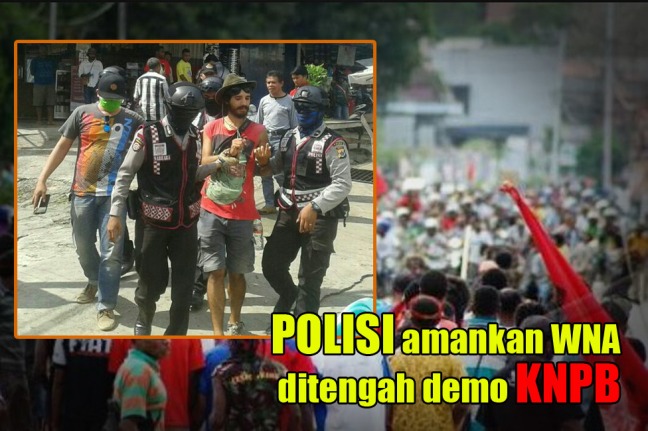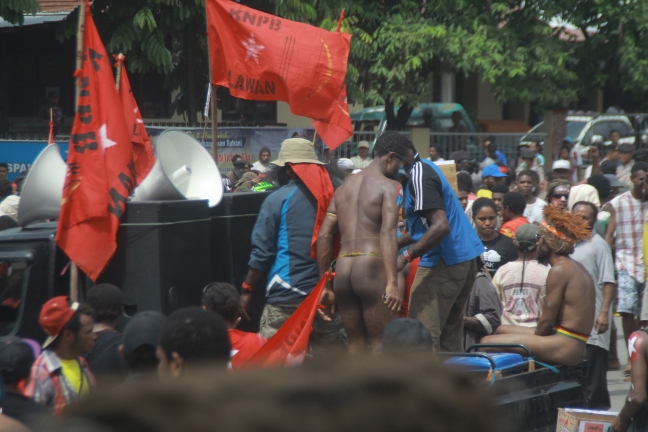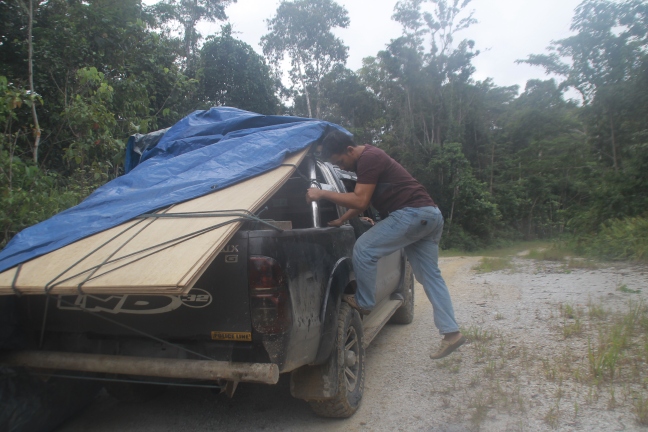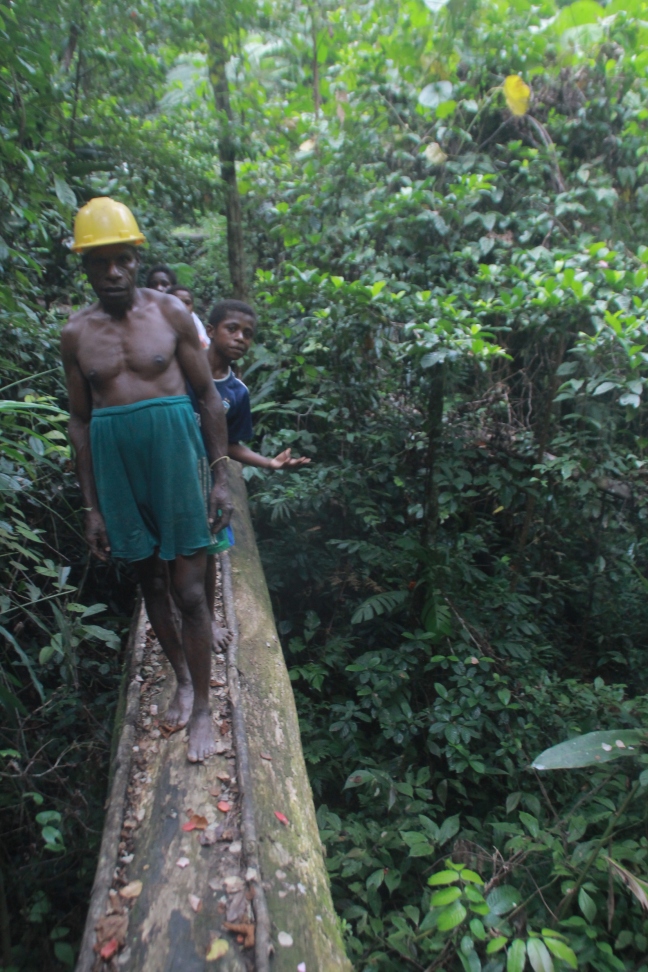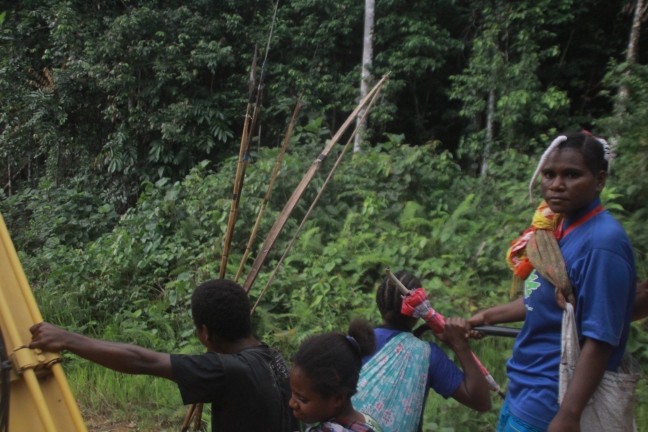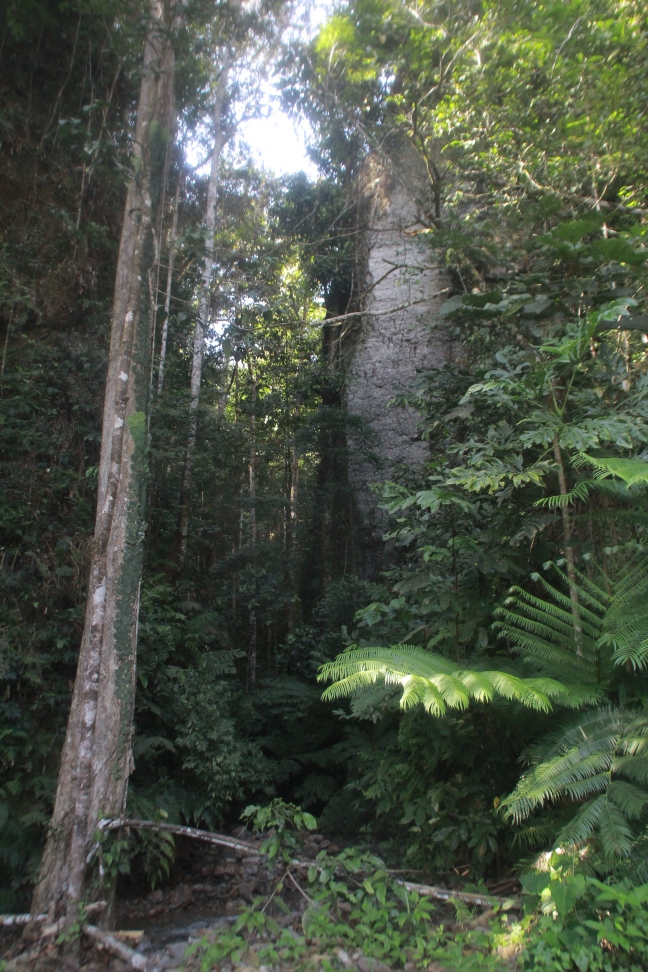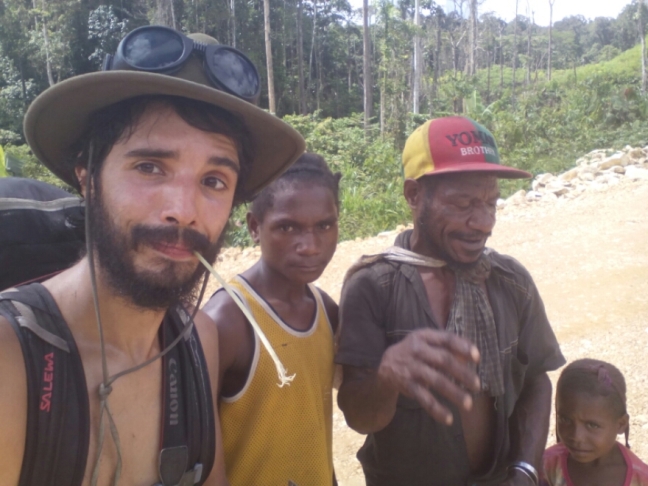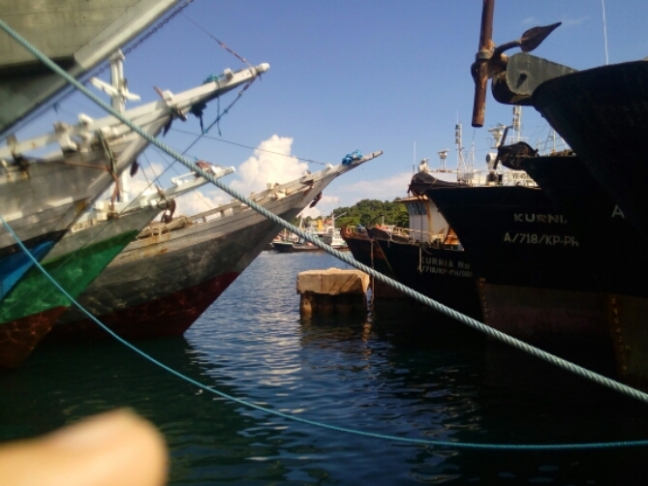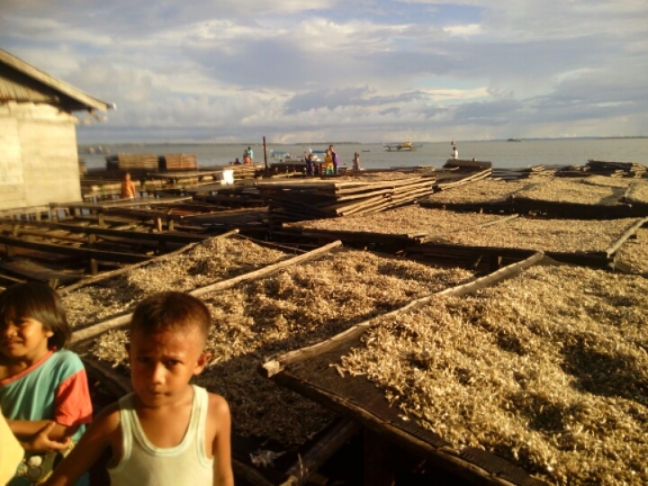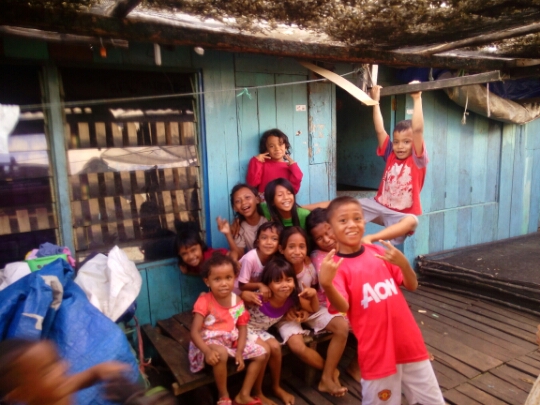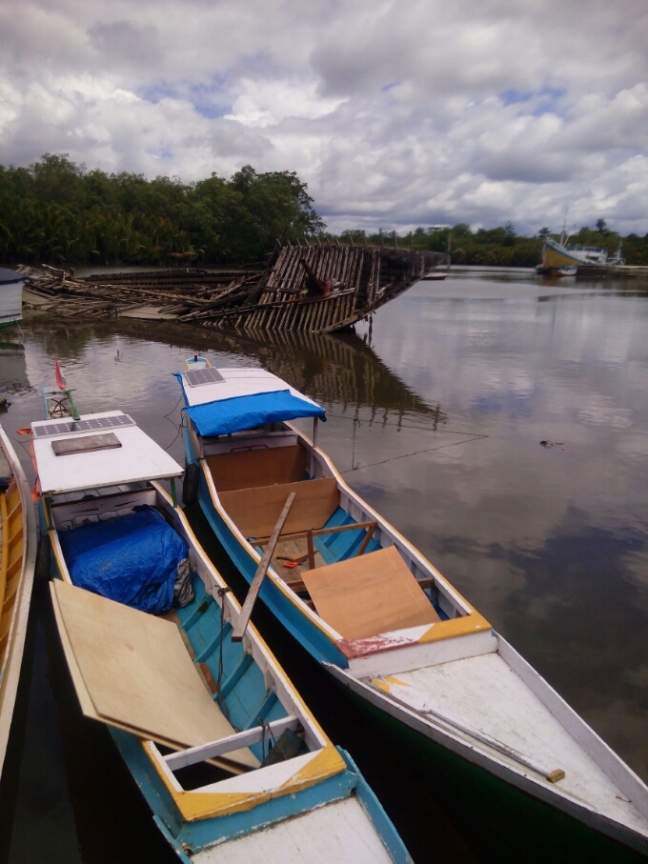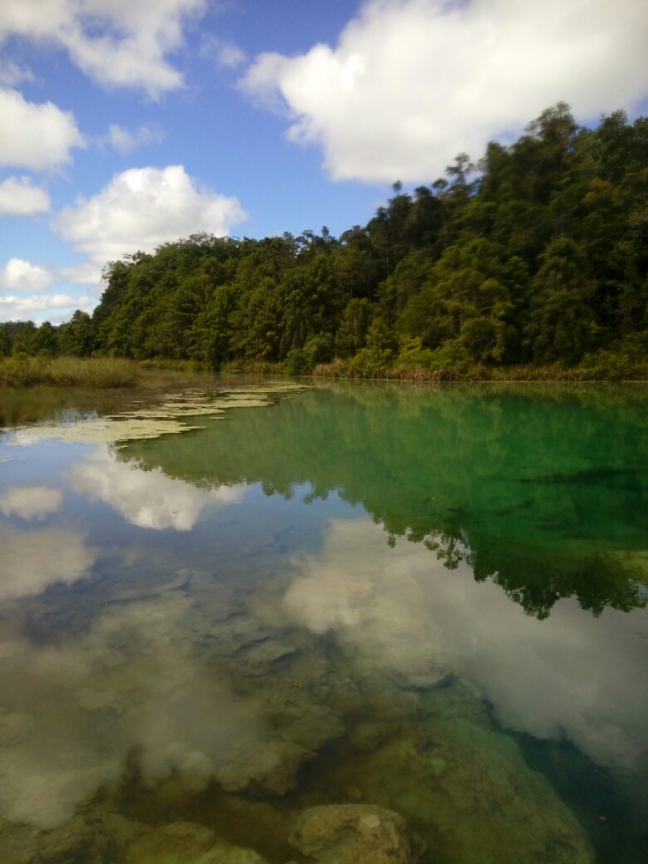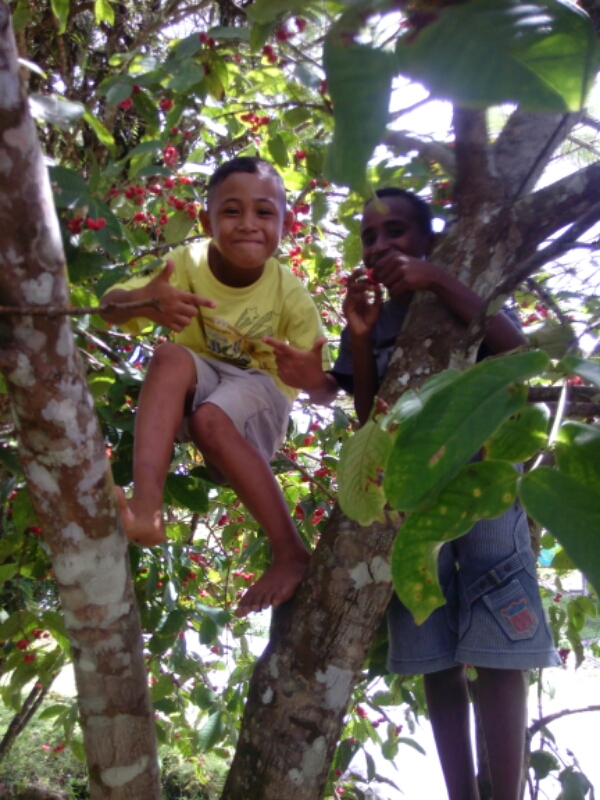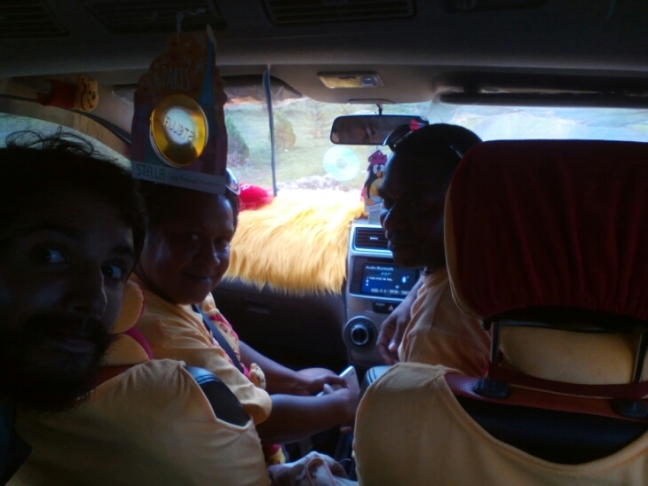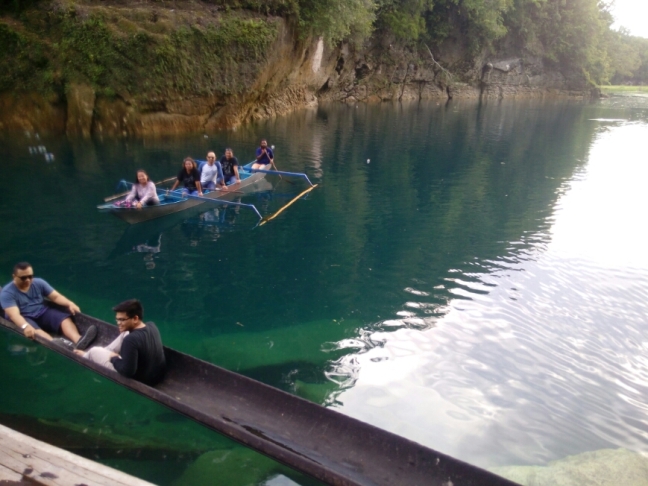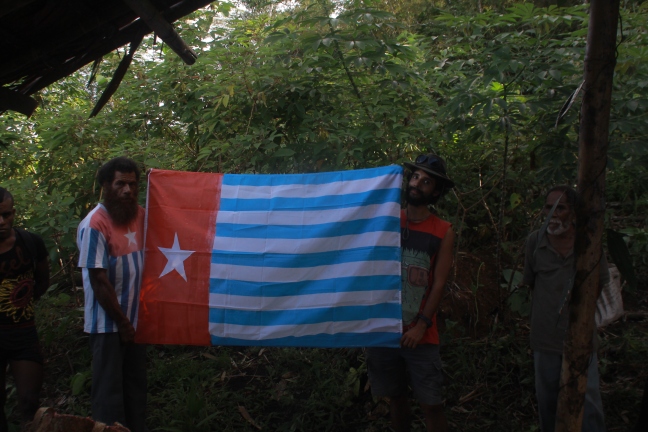
As with hitchhiking boats, it’s quite easy.
Wake up in the morning, follow some guys in a muddy, labyrinthine, flooded jungle track for almost 2h and you get to the “especial place” gathering.
How to get these people to show you the way is another story, but involves books 😀
Once you reach the nice gathering place you learn how Taro is cultivated: you take the plant, collect the roots (sweetpotato like, but thicker and drier), put the branches on the hole again, wait for 6 months, repeat. They also hunt opossums as meals, food is not a problem :).
Then the gathering, most of the people are old men. Everything starts with a prayer, then a summary of the news. Worryingly they think that by September the UN will vote for West Papua to be independent, UN will send troops to kick out the military and police troops and give them a brand new country.
Well, no, the world does not work that way, while all the same the world does work that way in their minds.
Being of valencian origin, catalan culture, growing on the ashes (50 years after) of spanish civil war, failed coup attempt 4 years before I was born, ETA terrorism, West Sahara as an ex colony of spain recolonized by Morocco, and the current independence politics going on, thatbcomes handily when grasping the settings anywhere else in a struggle of any kind.
From its complexities to its simplifications.
I’ll go for its simplifications as it’s simple, far enough, any other thing would be a book and not a blog post.
Shortly: West Papua colony of Netherlands, UN in the 60-70s wants all the “nations” to lose the colony status, the Indonesians want more land (as it was on any “nation” mind the last 500 years), Netherlands controlled Indonesia, it controls West Papua, So West Papua is indonesia, Indonesia controls it now. Locals no happy, struggle, killings, repression, attacks, more repression, hiding, paranoia and fear of the outside world getting in, shutting of information in and out, government afraid, indigenous ignorant and angry. And this is the “simplified”.
I’m told I’m the first foreigner to ever go there, the conflict runs since the 70s (68-69 all started escalating). That can give you an idea of how things are going. Basically as now no foreign press is allowed to roam freely in this part of the country, by law, and the police is really paranoid of that*. On the bright side the new president of Indonesia Jakowi, has said that that has to change, but so far it has not been legislated, nor enforced.
With the simplified context let’s go to the meeting. The info comes from one of the few mid age members that has some basic English and access to the media that talks about West Papua, only one informant from highly biased sources*. On top of the UN September thing, other news of around West Papua, in Timika (city close to a huge mining company, freeport) it seems that delegation of the FPM is being closed and many people on the streets protests. I’m shown a picture of women laying on the ground in front of the tyres of a military vehicle. Other news of other detentions and incidents.
After the participants of the meeting and my guide insist that I “interview” them.
Highly exited I proceed with the task starting with the Capitan of the commando. Soon I realize that what I understand of interview and what they understand it’s quite different. Their understanding is ‘say whatever you want, accept it as truth, finish the speech’, my understanding was ‘ask whatever question you might have, push for the answer’.
It would be obvious to anyone that both are incompatible, it was plain for me too, I was to be used as a recording and distribution machine to the “outside world”, despite that I managed to extract 0, 1 or 2 answers per “interview”.
A dozen “interviews” happened, so I got some questions down the line, but far off from what I would have desired. I wanted to paint a board and clear picture of the situation there, but too much interrogation on my part was confronted with uneasiness, nervous looks to the others and rush to the next “interview” by my translator, where the next on the row will describe his/her position and number on the military branch and talk whatever he wanted to be said, usually repeating what was already spoken before… I don’t think they behaved that way out of fear or to hide something but more because of being highly unused to the situation.
On the simplified side what I got home is:
- They are really angry at what the Indonesian military and police did and, to some point they felt, where still doing†. Murders, rapes, shootings (one woman sowed me a bullet wound in her palm of when she was a child) and detentions.
- They are old and tired by the struggle and what that something magical will happen in September that will solve ALL their problems.
- They feel left behind socially and economically by all the indonesian population living now in Papua.
- They don’t mind fighting and dying again.
- They are bond and mind a lot religion.
- One at least wouldn’t mind towing away all non Papuans the sooner the better.
- Worst of all, they feel treated as stupid inferior beings by the Indonesians, whit no mere rights than mere slaves to bis disposed off.
Of all the points obviously the last one sets the reasons why colonialism was so terrible and why despite all the odds against people would risk their lives just to get out of that mentality, specially in a world that does not accept colonialism and slavery any more.
Food between the interviews, taro, vegetables, extremely sweet tea or coffee.
Showing of the “militiamen” armed with machetes and lances. History of the commando, old photos, hand made Flag rising, prayer. Many photos with me posing with different sections of the commando.
Curiously despite the opposition to the Indonesians all the meeting is held in Indonesian language even when everybody could understand the local language.
Also as I mentioned there are not many young people among the units, I’m told they are afraid to continue with the struggle, only those with family reasons join the fight.
On the evening the sun sting behind the undulating jungle covered lands, the life now revolves around a fire. The hill huts pooping with their brown roofs out of the vegetation provide a resting place. Cooking, telling stories, having warm fire light under the precious shining stars spanning both hemispheres.
A world where life is bountiful and food and warmth is not something to worry about, where the nature is beautiful paradise by default everywhere you go, everywhere you look, where humans managed to put the same old mistakes in a brand oldy new environment.
The fact that I’m not more thrilled about the certainly unlike experience and environment is that I deeply realize how pointless, biased, short sighted and world apart this conflict is, it will take me days to partially overcome that feeling, I don’t think it will ever completely leave me.
It’s like the world does not realize this place exists, is like this place does not know the world exists. Is the world going over the same puzzles again and again and nobody even knows this piece has been created and forgotten in some place of the room?.
*I’ll be the living proof of that media being highly biased in a latter incident (not that the media is not biased perse, but it can get worse, nor that it’s not understandable either).
† On a notice virtually every indigenous Papuan that i met in 1 month in West Papua lst a family member.
